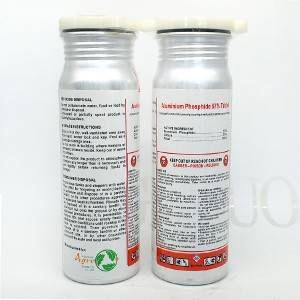Aluminum phosphide 56% TAB | Fumigant for controlling pests in warehouse
Introduction
Aluminum phosphide is highly effective in killing pests due to the release of a toxic gas called phosphine (PH3) when it comes into contact with moisture, particularly water vapor or humidity in the environment.
The mode of action of phosphine gas is primarily through its ability to disrupt the cellular respiration process in pests, leading to their death.
Mode of action
Here's a more detailed explanation of how aluminum phosphide works:
- Release of Phosphine Gas:
- Aluminum phosphide is typically available in the form of pellets or tablets.
- When exposed to moisture, such as atmospheric humidity or moisture in the target environment, aluminum phosphide reacts to release phosphine gas (PH3).
- The reaction occurs as follows: Aluminum phosphide (AlP) + 3H2O → Al(OH)3 + PH3.
- Mode of Action:
- Phosphine gas (PH3) is highly toxic to pests, including insects, rodents, and other stored product pests.
- When pests come into contact with phosphine gas, they absorb it through their respiratory system.
- Phosphine gas interferes with the cellular respiration process in pests by inhibiting the activity of enzymes responsible for energy production (specifically, it disrupts the mitochondrial electron transport chain).
- As a result, pests are unable to produce adenosine triphosphate (ATP), which is essential for cellular energy, leading to metabolic dysfunction and ultimately death.
- Broad-Spectrum Activity:
- Phosphine gas has a broad spectrum of activity, meaning it can control a wide range of pests, including insects, nematodes, rodents, and other pests found in stored grains, commodities, and structures.
- It is effective against various stages of pests, including eggs, larvae, pupae, and adults.
- Phosphine gas has the ability to penetrate through porous materials, reaching hidden or hard-to-reach areas where pests may be present.
- Environmental Factors:
- The release of phosphine gas from aluminum phosphide is influenced by environmental factors such as temperature, moisture content, and pH levels.
- Higher temperatures and moisture levels accelerate the release of phosphine gas, enhancing its effectiveness in controlling pests.
- However, excessive moisture can also reduce the efficacy of phosphine gas, as it may react prematurely and be rendered ineffective.




















